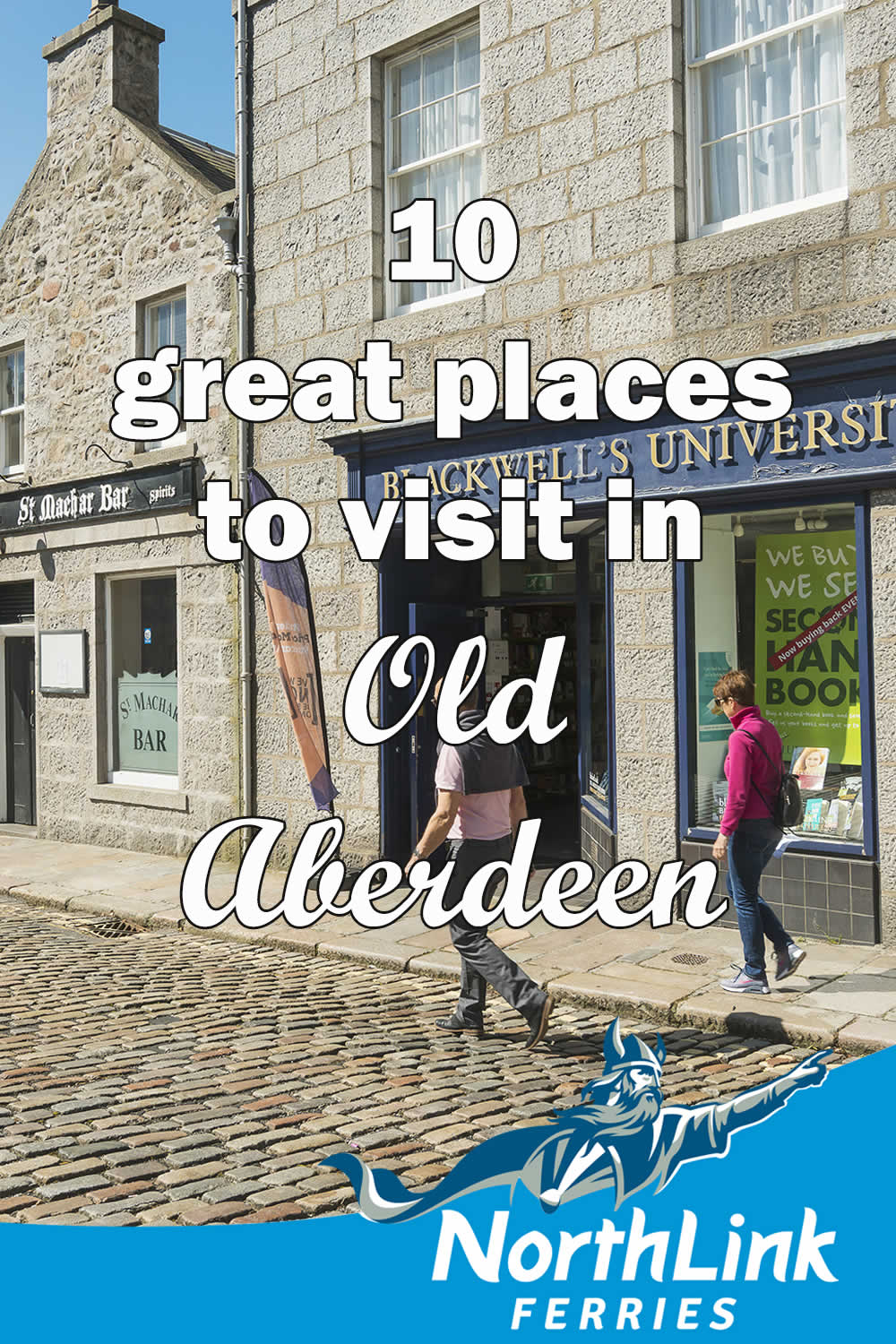Ten great places to visit in Old Aberdeen
Originally, Aberdeen was established as two distinct areas: New Aberdeen around the River Dee and Old Aberdeen around the River Don. In 1891, the two burghs united to form Aberdeen as we know it today.
All in one area, you can visit a 1,500-year-old cathedral, the fifth oldest university in Britain and Scotland’s oldest medieval bridge.
Old Aberdeen is a long-established community with a history that dates back more than a thousand years. Strolling through its characterful, quaint cobblestone streets will feel like you have stepped back in time. With remarkable medieval architecture, it’s easy to understand why this area is one of the city’s favourite hidden gems!
We recently explored Old Aberdeen and here are 10 great places you must see next time you are in the area!
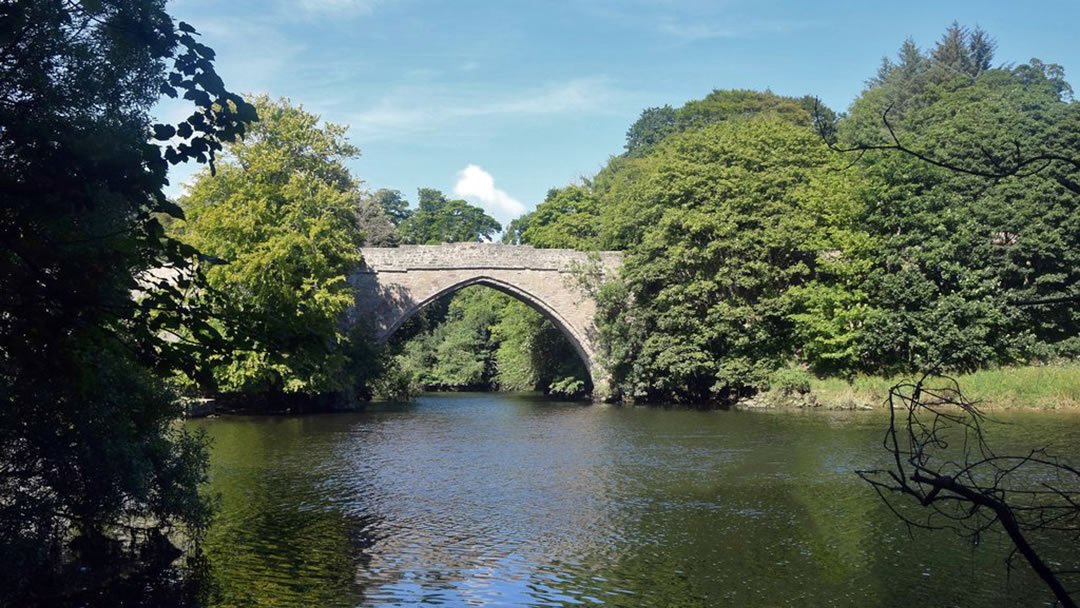
1. Brig O’Balgownie
The Brig o’Balgownie is a lovely example of ancient history. It is the oldest medieval bridge in Scotland and one of the oldest bridges in the UK! Bishop Henry Cheyne first began its construction in the late 13th century, and it was reportedly finished in 1320 at the request of King Robert the Bruce.
Prior to the construction of the Bridge of Don in 1831, the Brig o’Balgownie served as the sole crossing of the River Don. The bridge is now a Scheduled Ancient Monument and is no longer open to vehicular traffic.
The Brig o’Balgownie is bordered by mature trees along the banks of the River Don and attracts a variety of wildlife. Numerous bird species as well as seals and otters can be spotted in and around the riverbanks.
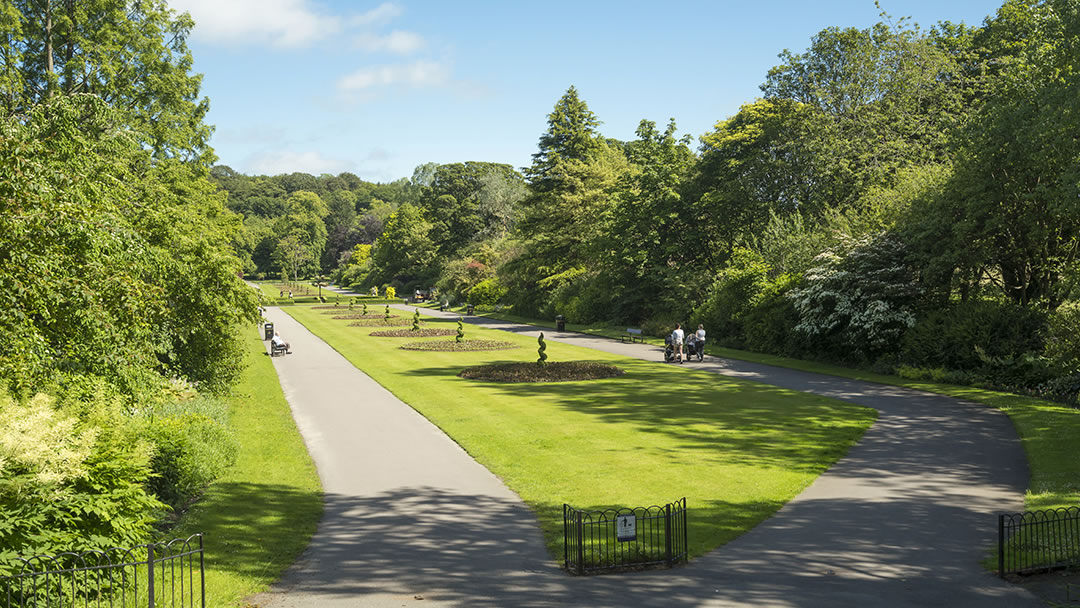
2. Seaton Park
From the Brig O’Balgownie, a lovely riverside walk will lead you to Seaton Park. Seaton Park is one of Aberdeen’s largest parks and was purchased by the city in 1947. The park is a fantastic location to relax thanks to its spacious open areas, formal gardens and children’s play facilities.
Following a nationwide vote in the UK’s Favourite Parks competition, Seaton Park was selected as Fields in Trust’s best park in Scotland in August 2022.
The park includes multiple listed features within its borders such as the Wallace Tower and Tillydrone Motte. The Wallace Tower was a splendid early 17th century tower house, originally built in the city centre at Netherkirkgate. In the 1960s, it was dismantled and rebuilt in Seaton Park to create room for a new building.
Tillydrone Motte appears as a large conical mound, although it was previously thought to have been a motte – a wooden fortification on top of a raised earth mound. Recent investigations suggest the site is much older than first anticipated. It appears to have served as a defensive site around 200 AD, and it potentially has earlier roots as a prehistoric cairn.
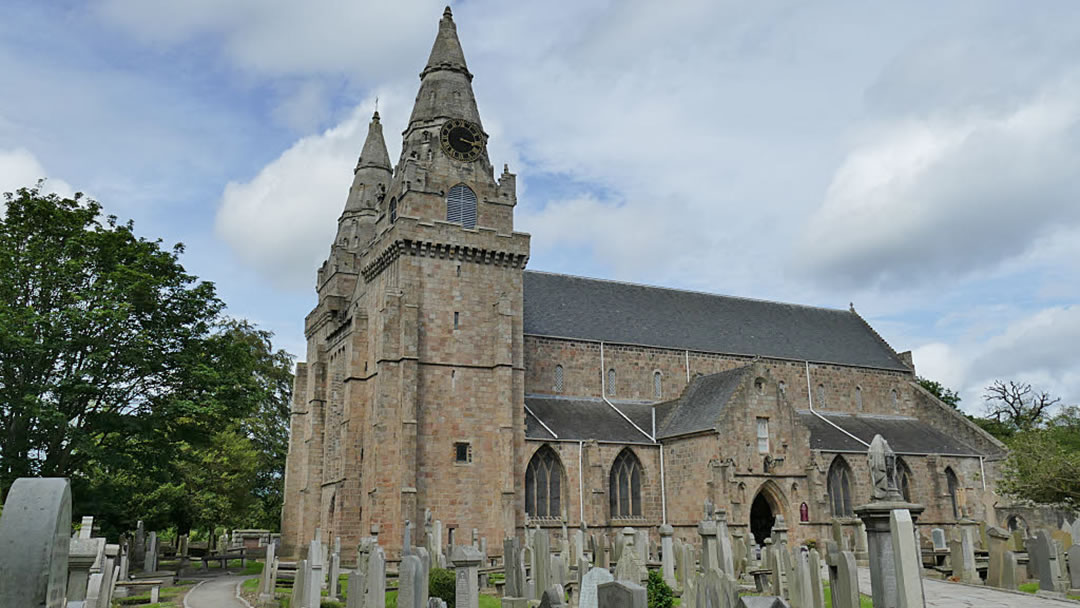
3. St Machar’s Cathedral
St Machar’s Cathedral is Aberdeen’s oldest building that is still in use! The cathedral dates back almost 1,500 years as it was originally built in 580 AD by St Machar – a Celtic saint and disciple of St Columba.
This building is architecturally spectacular with a fortified west front, gorgeous stained glass, towering twin spires and a distinctive heraldic ceiling. The heraldic ceiling features 48 vibrantly painted shields and was installed around 1520. The shields display the coats of arms of prominent bishops and earls of Scotland, as well as European monarchs.
St Machar’s Cathedral technically no longer qualifies as a cathedral but rather a high kirk. This is because the site has not been the seat of a bishop since 1690. Today, this high kirk remains a popular venue not only as a place of worship, but also for musical performances.
Fascinating fact: After his execution in 1305, famed Scottish warrior William Wallace was dismembered and dispersed to different parts of Britain to warn off other rebels. His left arm was sent to Aberdeen and legend says the limb was buried within the cathedral’s walls.
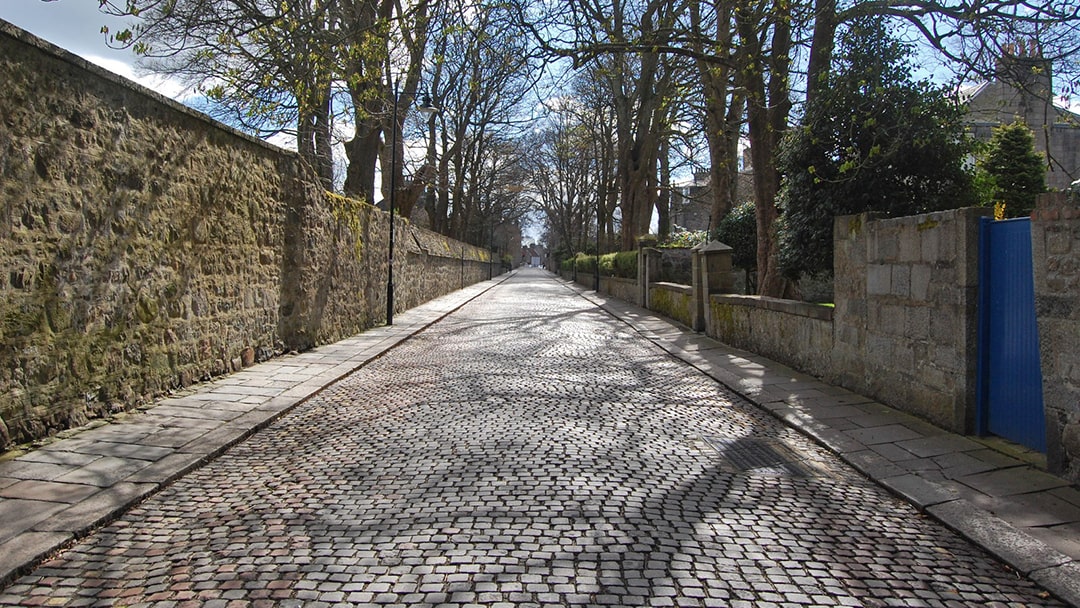
4. The Chanonry
The Chanonry refers to the vicinity around St Machar’s and is also the name of the picturesque, cobbled street leading to the Cathedral. The canons (clergy) of St Machar’s Cathedral, who were necessary for the Cathedral to operate, called this historic street home, giving rise to the street’s name.
Although many of the earlier structures were ruined following the Reformation, the buildings that now line the street were reconstructed throughout the 18th and 19th centuries. Most of the area’s layout still resembles that of the medieval era.
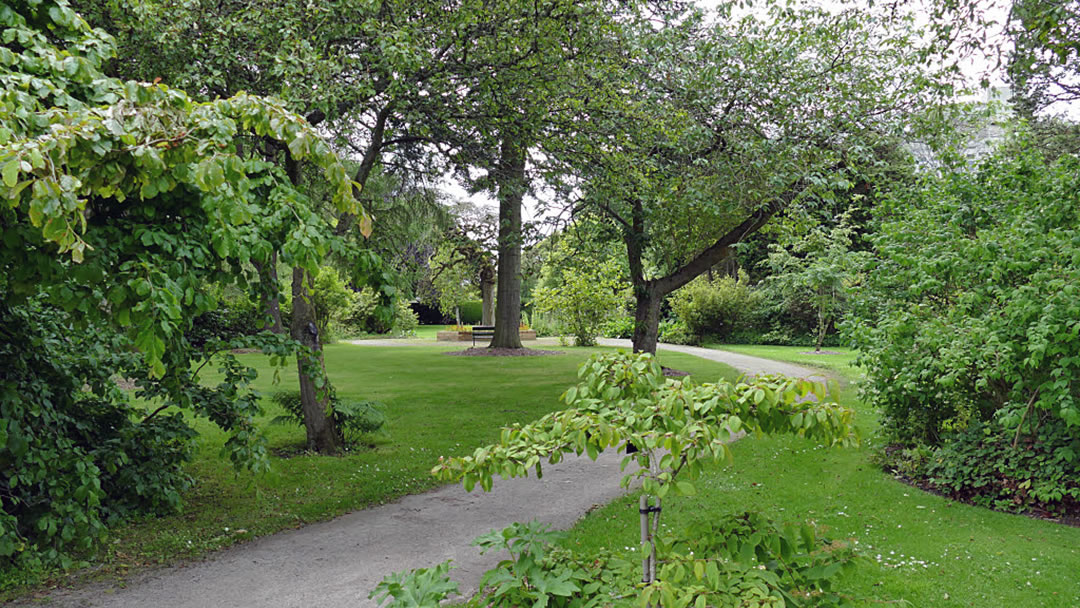
5. Cruickshank Botanic Garden
The Cruickshank Botanic Garden, established in 1868, is situated in the King’s College campus of the University of Aberdeen. The gardens’ purpose is to foster an appreciation for the value, variety and the beauty of plants. It was also built to develop knowledge regarding their importance to the environment.
Visitors can enjoy the 11-acre garden’s beauty and tranquillity all year long. Some of the garden’s features include a sunken garden, a rose garden, a herbaceous border and an arboretum. It also showcases a nationally significant collection of over 250 plant species.
6. Zoology Museum
The Zoology Museum is the only sizeable worldwide collection of zoological specimens in the north of Scotland. The displays, which comprise some 75,000 objects, are the culmination of over 200 years of teaching and research efforts.
Among the collections here include skeletons of great apes and whales, a stuffed Bengal tiger and various other exhibits about evolutions. The museum is open Monday-Friday from 10am-4pm and is free for all to visit.
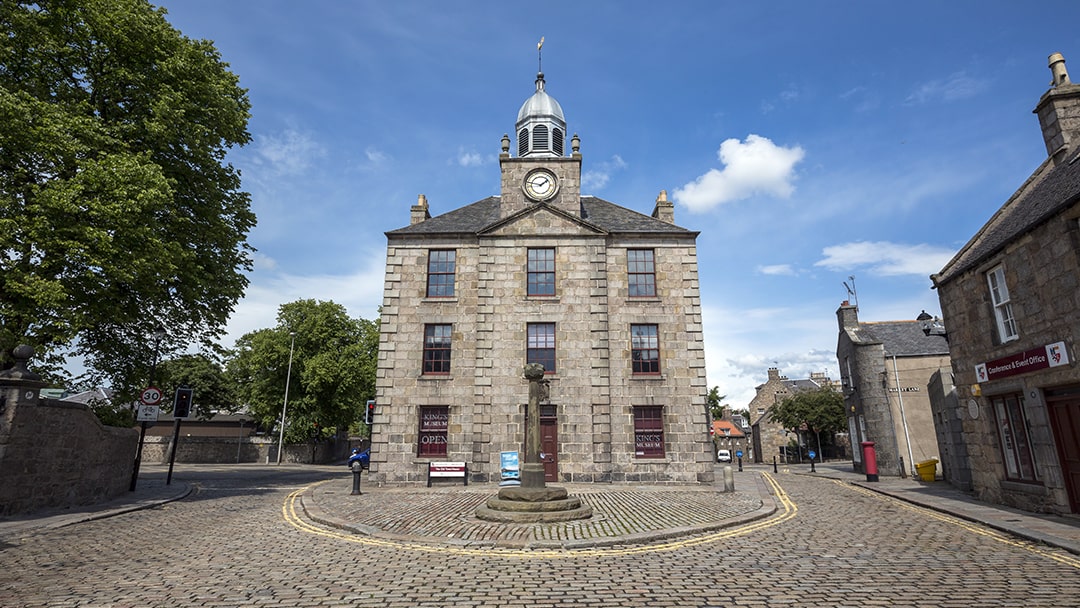
7. Old Town House
At the top of the High Street is where you’ll find the Old Town House. The Georgian building was designed by George Jaffery and was erected in 1788. It served as the heart of the thriving market place and the centre of the region. The Town House has served a variety of purposes over 150 years, including a police station and a library – but is now open as a museum.
The remains of Old Aberdeen’s market cross is displayed on a pedestal outside the front of the building. Parts of the structure date back to the 16th century and were recovered in a nearby smithy in 1841.
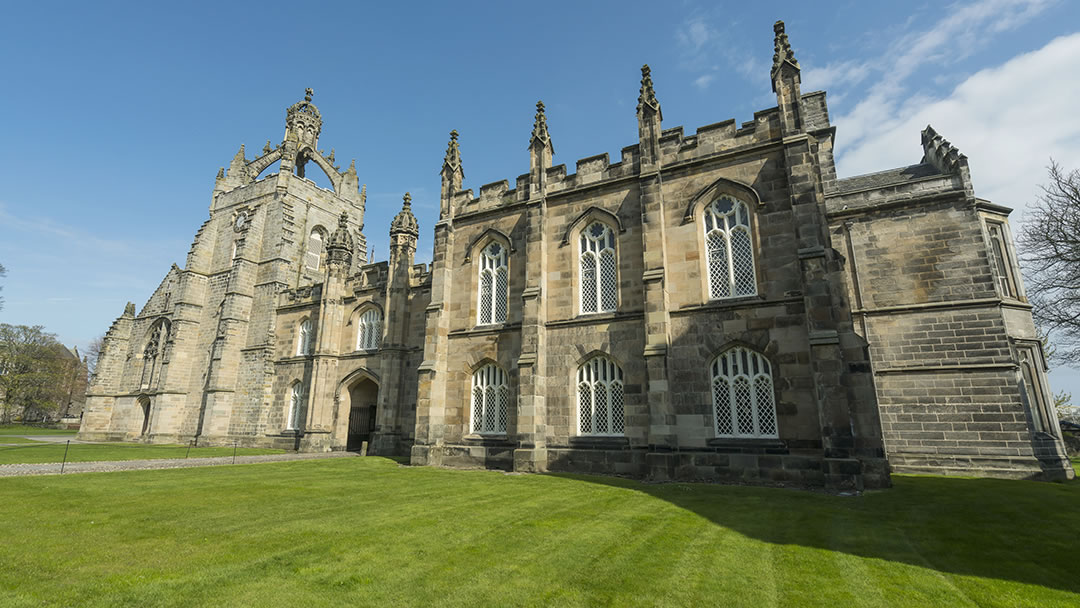
8. King’s College
King’s College, which was constructed in 1495 to house the University of Aberdeen, serves as the iconic centre of the campus. The university was the third to be established in Scotland. This structure renowned for its exquisite architecture as well as its symbolism – the pursuit of knowledge.
Old Aberdeen had developed a strong reputation as a place of learning. When Marischal College was founded in 1593, this took Aberdeen’s university count to two – this is the same number as in all in the whole of England at the time (Oxford and Cambridge).
King’s College Chapel was constructed in 1498, has an impressive imperial crown atop its tower. An interesting fact about this structure is that there is more medieval woodwork found here than in any other Scottish church!
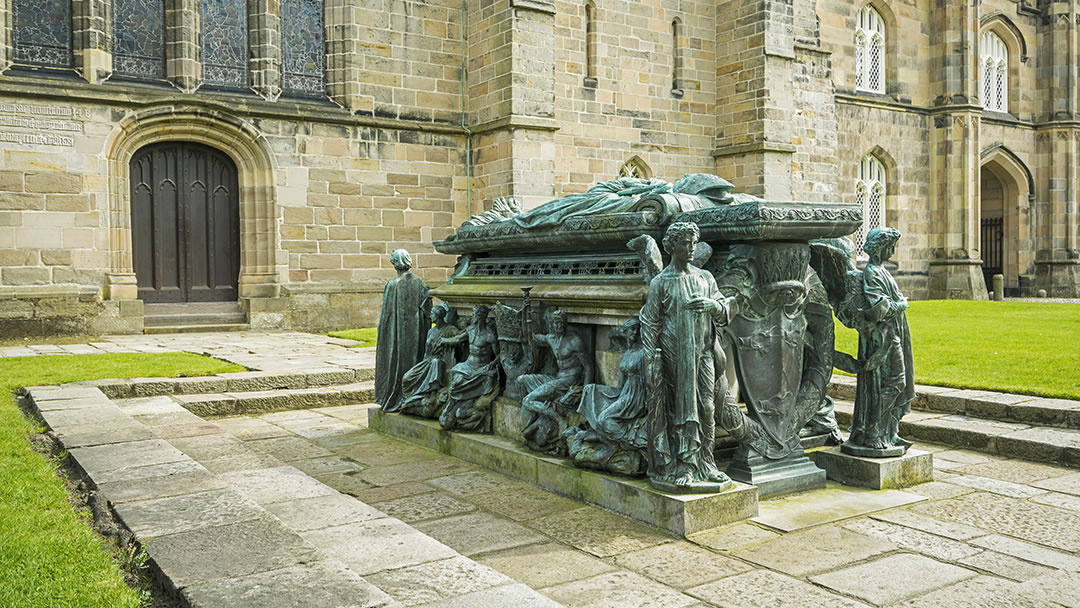
9. Bishop Elphinstone’s Monument
Located just outside of King’s College Chapel is an intricate and intriguing sculpture built to commemorate Bishop Elphinstone, the founder of the University of Aberdeen. He passed away in 1514 and was buried inside the chapel in front of the altar.
An updated memorial made of stone and marble was crafted by Henry Wilson to honour the 400th anniversary of his death. When it arrived, it proved to be too big for its intended location inside the Chapel and has sat in its current outside position since 1946.
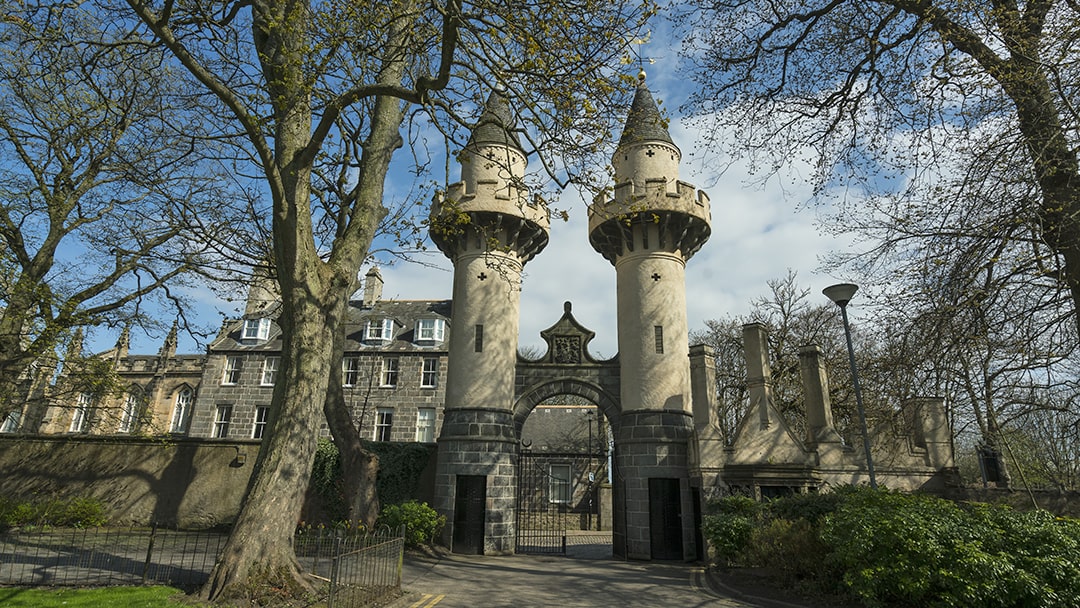
10. The Powis Gates
Within Old Aberdeen, the Powis Gates are a distinctive landmark and monument. The twin cylindrical towers and parapets were designed by Alexander Fraser and built by John Leslie of Powis in 1833. The lavish and imposing 19th century structure functioned as Powis House’s grand entryway.
 By Amy Leith
By Amy LeithBorn and raised in Aberdeen with an admiration for Orkney and Shetland, loves to travel and visit new places, enjoys cooking, always listening to music, spends a little too much time on TikTok.
Pin it!